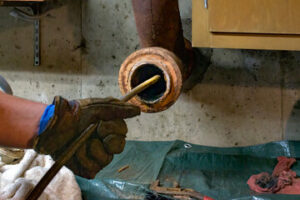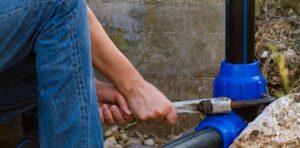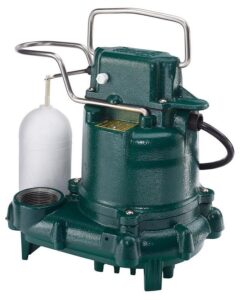Drain Cleaning Philadelphia isn’t often at the top of homeowners’ to-do lists, but when slow-draining sinks, it’s time to call in the professionals. Read on to learn about the best products and methods for clog removal.

Many clogged drains are caused by fat, oil and grease (FOG) that builds up inside pipes. Pouring a mixture of baking soda and vinegar down the drain can dislodge this build-up and move it down the pipes. Just be sure to follow it up with hot water to avoid damaging your plumbing pipes.
Hair, coffee grounds and food scraps can also cause clogged pipes. It’s important to put these items in the garbage instead of the drain. Likewise, children’s toys and other objects often end up in toilets or showers. If these items aren’t properly disposed of, they can cause large blockages that require professional help to resolve.
Chemical drain cleaners are available at most hardware and grocery stores. These products are easy to use- just pour, wait and flush. However, some are corrosive to plastic pipes and may not be safe for all drains.
Another option is to try one of the newer “air burst” drain cleaning devices. These are designed to release a blast of air into the pipe, which can break up small clogs. However, these items don’t always work and are not recommended for regular use. If these solutions don’t work, call a plumber for professional help. A professional plumber will use a high-pressure drain blaster to clean out your clogged pipes without damaging them. They can also suggest ways to prevent future clogs.
Clogged Sinks
Sink drains often clog with hair, food scraps, soap scum, or oily residues that stick to pipe walls over time. Clogged drains can cause foul odors that spread through your home, so it’s important to address them as soon as you notice slow-moving or standing water.
One of the best ways to clean a clogged sink is by using an inexpensive plastic drain cleaning tool. These 24-inch to 36-inch strips have barbs cut into them that grab ahold of clogs and pull them straight out of the drain. Just insert the device into the drain, scour over any hair or other debris, and then pull it back out. It’s important to pull it out straight up and not to twist or turn it sideways, which can break the tool or even worsen the clog.
Another simple way to unclog a sink is by using a combination of baking soda and vinegar. This natural kitchen staple reacts to eat away at organic material that clings to the pipes in your sink. Simply pour one cup of baking soda followed by one cup of vinegar into your clogged drain, plug it, and let the mixture sit for about an hour. Then, flush it with boiling water.
For serious clogs, a plumbing snake may be needed to remove the clog from your pipe system. This heavy-duty tool is powered by a motor that rotates a blade fastened to the end of a cable. Feed the snake into the affected drain and then advance it until you feel it hook a clog.
Clogged Toilets
A clogged toilet can be a big inconvenience. Not only is it inconvenient for the household, but the overflowing waste can create health hazards and property damage. If a plunger does not clear the clog, it may be time to call for professional drain cleaning services.
Non-flushable items are a major reason behind constant toilet clogs in many households. Products that claim to be flushable, such as “flushable wipes,” actually cause problems for home plumbing systems and sewage systems. Cotton balls, q-tips, and paper towels are other common culprits that should not be flushed, either. Instead, place a trashcan in every bathroom so that these items can be properly disposed of.
Another common reason for a clogged toilet is an overflowing or sewage-backed-up bowl. This is usually a sign of an issue in the toilet’s trap or a larger blockage in the branch drain line or main sewer line.
If plunging does not resolve the clog, try using a long metal stick called a drain snake (or auger). This is an effective tool for breaking up and dislodging stubborn debris. If you don’t have a drain snake, you can try using an empty plastic bottle — preferably one that has a narrow opening, such as a two-liter soda bottle — filled with water. The bottle will add weight to the stick and help it break up a clog.
Clogged Showers
Showers are another place where hair and soap scum can build up, leading to a clogged drain. If your shower has a lot of gunky, smelly buildup and you have a hard time getting water to flow down the drain, try pouring boiling water down it. Make sure you do this carefully so you don’t damage the pipes or your skin.
If the hot water doesn’t work, try a DIY cleaning solution made of baking soda and vinegar. Pour a cup of the solution into your shower drain and leave it to sit for an hour. After the hour is up, pour more hot water down the drain to rinse away the cleaning solution and any lingering debris that might be in your shower drain.
Using chemical drain cleaners is a last resort. These caustic chemicals can be damaging to your pipes and shower fixtures, as well as a health risk for you and your family. If you must use them, make sure you follow the instructions very closely and don’t let the solution sit for longer than recommended.
Other ways to prevent clogged shower drains are to clean your bathroom with safe household cleaners, comb or brush your hair before showering and transfer any loose hair to a wastebasket. In addition, try a plunger on your clogged shower drain, but be sure to line the plunger with petroleum jelly for a better seal and more suction power.
Clogged Bathtubs
The bathtub drain sees the most use in our homes, and it is often the site of hair-related clogs. Hair clumps and soap scum build up over time to stop water flow and create foul odors.
If you are lucky, a simple mix of baking soda and vinegar will clear your tub drain. Pour half a cup of baking soda into the drain, followed by about a cup of white vinegar. Let the mixture fizz for about 15 minutes before running water into the drain to see if it worked. Repeat this process if necessary.
Alternatively, try a chemical drain cleaner. However, we advise against using acidic drain cleaners that contain nitrates or peroxides, as they can be harmful to pipes and your skin. If you do choose to use a chemical drain cleaner, make sure that it is safe for your pipes and follow the instructions carefully.
If you are unable to unclog your drain by using the tips above, or if you notice that your clogged tub drain is emitting foul odors, call in a professional plumber. They will have more tools and experience to get your drain flowing again. They will also be able to recommend ways to prevent future clogs. In addition, they will be able to inspect your home’s plumbing and make any necessary repairs.
Clogged Drains in the Basement
Floor drains in the basement are more prone to clogging than other drains because they’re located in the floor of the house where dirt and debris often collect. Debris in the form of dust bunnies, hair, and other organic matter can find its way into a basement floor drain and cause it to clog.
The good news is that a basement floor drain doesn’t necessarily have to be as difficult to clean as other drains in the home. You can use a combination of baking soda and vinegar to break up the clog in most cases. First, remove the drain cover and clean it off with hot water. Remove any dirt or debris that you can reach with your hands and place it in a garbage pail.
Pour a mix of 1/2 cup of baking soda and 1 cup of distilled white vinegar down the drain. Wait about 30 minutes to allow the mixture to foam and cling to the clog. Next, remove the stopper and plunger vigorously. You may have to repeat this several times before you can get the clog loose.
If the above cleaning methods don’t work, you may need to use a snake to unclog your basement drain. You should always consult with a professional before using a snake because some products like Drano can damage the glue holding your pipes together, creating more problems in the future.

